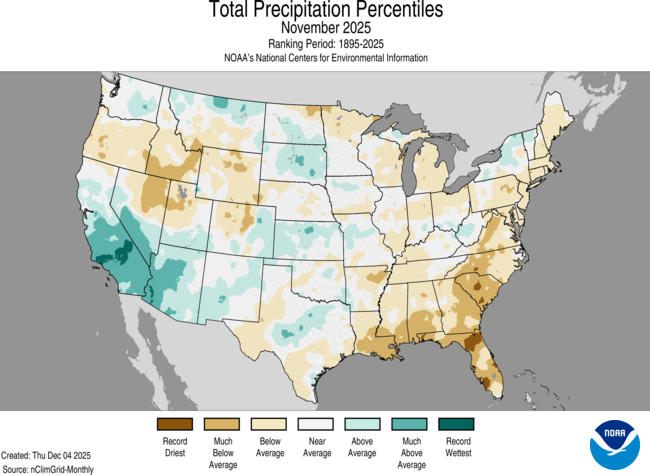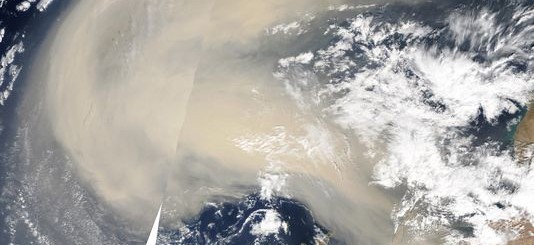-

If you use USGS streamflow, groundwater, or precipitation data, you will want to know about this. USGS is going through a modernization process and will be ending much of their pre-calculated statistics information by the end of 2025 or very early 2026. Thus, WaterWatch will be decommissioned. Realtime and monthly (for the prior month) streamflow percentiles will…
-

The global climate maps for November 2025 are now available from https://www.ncei.noaa.gov/access/monitoring/ghcn-gridded-products/maps/201711. They show most of the planet was warmer than normal with a number of areas the warmest everywhere. The precipitation map shows that most of the eastern United States was drier than normal except the area right around the Great Lakes. The Southeast…
Posted in: Climate summaries -

Earlier this week, NOAA released their latest monthly and seasonal summary for the United States for November and fall 2025. Across the United States, it was the 4th warmest November on record. However, here in the Southeast temperatures were much milder and were just above normal. A bigger story was the dry conditions across most…
Posted in: Climate summaries -

November 30 marked the official end of this year’s Atlantic hurricane season. It was a quiet one in the United States, with no landfalling hurricanes and just one tropical storm, Chantal. But the season as a whole was not that quiet and ended with a bang as Hurricane Melissa flattened a large part of western…
Posted in: Tropical weather -

The Weather Channel released a video story a few days ago discussing what a wetter Sahara Desert in the future might mean for the Atlantic tropical season. The current impact of Saharan dust on the development of hurricanes definitely affects the early part of the Atlantic season because the dust stabilizes the atmosphere, resulting in…
Posted in: Uncategorized -

After a week with some significant rains along the coastal plain stretching from Alabama to North Carolina (but much less elsewhere), the next week’s 7 day QPF is showing little to no rain for most of the region. A few patches of light rain are expected in a few locations but amounts are expected to…
Posted in: Climate outlooks -

The latest monthly outlook for December 2025 was issued late last week. It shows that after an early cold start to December, temperatures are expected to warm up later in the month, so we may see a relatively warm Christmas, although it is too early to be sure. The monthly rain fall map shows the…
Posted in: Climate outlooks